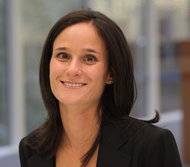The banks that created risky amalgams of mortgages and loans during the boom — the kind that went so wrong during the bust — are busily reviving the same types of investments that many thought were gone for good. Once more, arcane-sounding financial products like collateralized debt obligations are being minted on Wall Street.
The revival partly reflects the same investor optimism that has lifted the stock market to new heights. With the real estate market and the economy improving, another financial crisis seems a distant prospect. What’s more, at a time when the Federal Reserve has pushed interest rates close to zero, the safest of these new investments offer interest rates almost double that paid by ultrasafe United States Treasury securities, according to RBS Securities, which was involved in such instruments in the past.
But the revival also underscores how these investments, known as structured financial products, have largely escaped new regulations that were supposed to prevent a repeat of the last financial crisis.
“All of this seems like a fairly quick round trip,” said Manus Clancy, a managing director at Trepp, a research firm that focuses on commercial real estate. “You are seeing a fair number of sins being forgiven.”
Banks are turning out some types of structured products as fast or faster than they did before the bottom fell out. So far this year, for instance, banks have issued $33.5 billion in bonds backed by commercial mortgages, slightly more than they did in early 2005, when the real estate market was flying high, according to data from Thomson Reuters.
Banks have won over investors by taking steps to make this generation of structured products safer than the last one. But with demand for these products on the rise, credit ratings agencies and regulators are warning that the additional protections are already dwindling, allowing some of the old excesses to creep back into the market.
“The players in the business are generally the same as they were before,” said Tad Phillips, a commercial real estate analyst at Moody’s rating agency. “Because it’s the old players, they know how to push the boundaries.”
Whatever the risks, the basic principle behind the products remains the same. A pool of loans — whether home mortgages or corporate loans — are mixed together into bonds, ranked by varying levels of risk. If the underlying loans go bad, the bonds at the bottom of the pecking order suffer losses first, followed by the next lowest, and so on up the chain. It is only after enormous losses that the top-ranked AAA bonds lose money.
Bundling many loans into one investment, a process known as securitization, provides an efficient way to channel money to borrowers who might not otherwise get funds. But securitization proved dangerous during the last real estate boom because it encouraged banks to give loans to people with weak credit and then pass on those risky loans to the buyers of the structured products. When the real estate market dropped in value, it inflicted unexpected losses on those investors and led to chaos in the financial system. Many investors complained that the complexity of the instruments obscured their risks.
The Dodd-Frank regulatory overhaul is forcing banks to take extra steps in the process of bundling loans, but it does not change the basic approach.
For a glimpse into this process, both before and after the crisis, consider the mortgage taken out by the Hard Rock Hotel in downtown Chicago. In mid-2007, just as the real estate market was coming unhinged, the hotel — like many ordinary home buyers — took out a risky mortgage on which it paid only interest. JPMorgan Chase mixed this loan and others into a commercial mortgage-backed security. Credit ratings agencies gave a large portion of the resulting bonds a AAA rating.
After the recession, the hotel struggled to keep up with its payments, edging it toward foreclosure. It was one of several bad loans that caused losses for holders of the old bonds. But late last year, with the market for structured finance coming back to life, the hotel’s owners were able to refinance the old mortgage. In February, that refinanced loan turned up in a new bond, which again received a AAA rating.
Article source: http://www.nytimes.com/2013/04/19/business/banks-revive-risky-loans-and-mortgages.html?partner=rss&emc=rss


